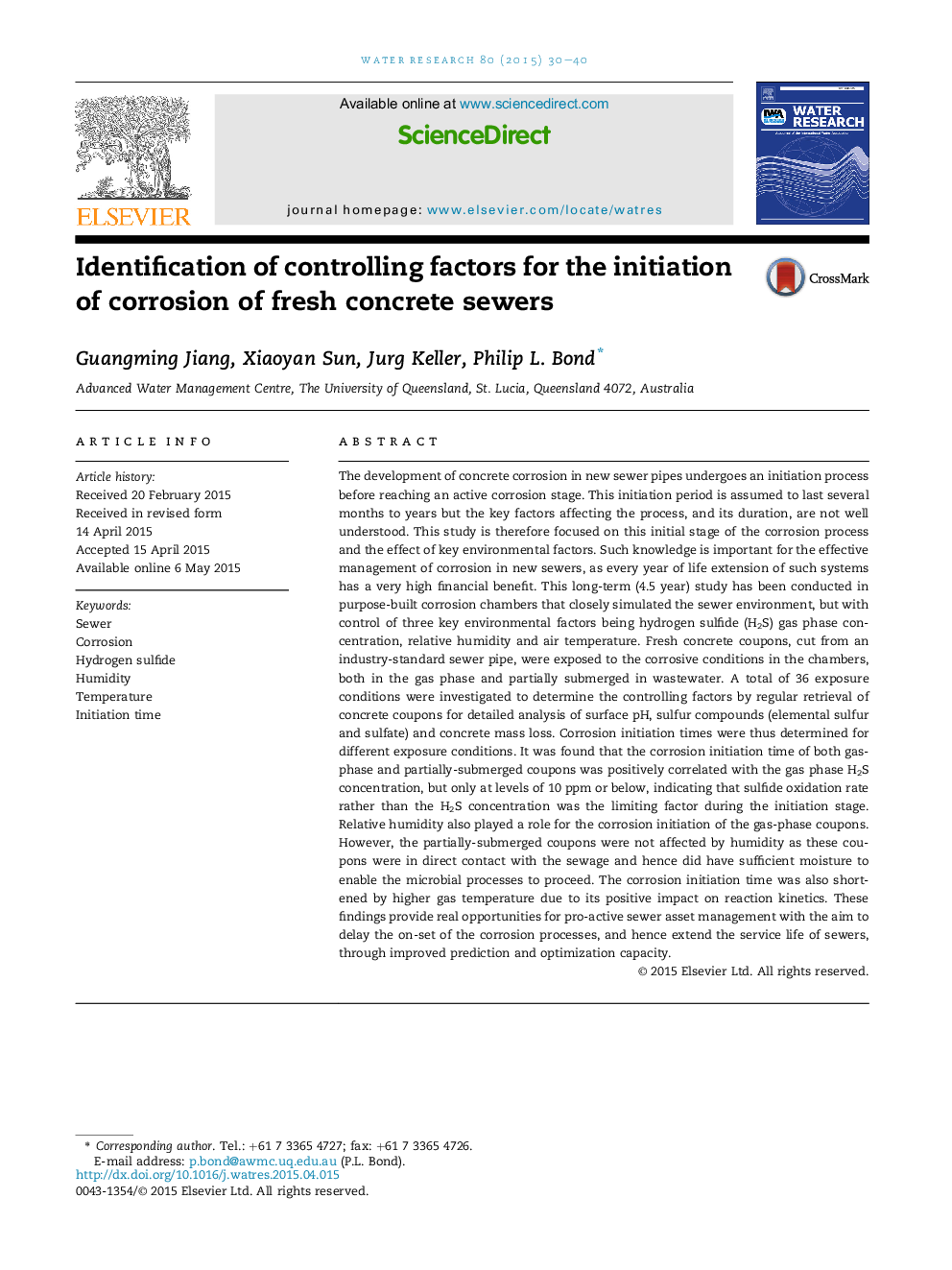| کد مقاله | کد نشریه | سال انتشار | مقاله انگلیسی | نسخه تمام متن |
|---|---|---|---|---|
| 6365662 | 1623088 | 2015 | 11 صفحه PDF | دانلود رایگان |
- A long-term study (4.5 years) focusing on the initiation of H2S induced sewer corrosion.
- The sulfide oxidation products gradually transform from elemental sulfur to sulfuric acid.
- Corrosion initiation is controlled by H2S only when the level is at or below 10Â ppm.
- Corrosion initiation is highly correlated with the gas temperature.
- Humidity is important for the corrosion initiation on concrete exposed to air.
The development of concrete corrosion in new sewer pipes undergoes an initiation process before reaching an active corrosion stage. This initiation period is assumed to last several months to years but the key factors affecting the process, and its duration, are not well understood. This study is therefore focused on this initial stage of the corrosion process and the effect of key environmental factors. Such knowledge is important for the effective management of corrosion in new sewers, as every year of life extension of such systems has a very high financial benefit. This long-term (4.5 year) study has been conducted in purpose-built corrosion chambers that closely simulated the sewer environment, but with control of three key environmental factors being hydrogen sulfide (H2S) gas phase concentration, relative humidity and air temperature. Fresh concrete coupons, cut from an industry-standard sewer pipe, were exposed to the corrosive conditions in the chambers, both in the gas phase and partially submerged in wastewater. A total of 36 exposure conditions were investigated to determine the controlling factors by regular retrieval of concrete coupons for detailed analysis of surface pH, sulfur compounds (elemental sulfur and sulfate) and concrete mass loss. Corrosion initiation times were thus determined for different exposure conditions. It was found that the corrosion initiation time of both gas-phase and partially-submerged coupons was positively correlated with the gas phase H2S concentration, but only at levels of 10Â ppm or below, indicating that sulfide oxidation rate rather than the H2S concentration was the limiting factor during the initiation stage. Relative humidity also played a role for the corrosion initiation of the gas-phase coupons. However, the partially-submerged coupons were not affected by humidity as these coupons were in direct contact with the sewage and hence did have sufficient moisture to enable the microbial processes to proceed. The corrosion initiation time was also shortened by higher gas temperature due to its positive impact on reaction kinetics. These findings provide real opportunities for pro-active sewer asset management with the aim to delay the on-set of the corrosion processes, and hence extend the service life of sewers, through improved prediction and optimization capacity.
234
Journal: Water Research - Volume 80, 1 September 2015, Pages 30-40
